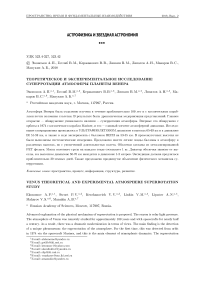Теоретическое и экспериментальное исследование суперротации атмосферы планеты Венера
Автор: Экономов А.П., Готлиб В.М., Кержанович В.В., Линкин В.М., Липатов А.Н., Макаров В.С., Манукин А.Б.
Журнал: Пространство, время и фундаментальные взаимодействия @stfi
Рубрика: Астрофизика и звездная астрономия
Статья в выпуске: 2 (23), 2018 года.
Бесплатный доступ
Атмосфера Венеры была отдаленно изучена в течение приблизительно 100 лет и с космическими кораб- лями почти половины столетия. В результате была драматическая модернизация представлений. Главное открытие - обнаружение уникального явления - суперротация атмосферы. Впервые это обнаружено с орбиты в 1974 с космического корабля Mariner, и это - главный элемент атмосферной динамики. Исследо- вание супервращения проводилось в УЛЬТРАФИОЛЕТОВОМ диапазоне в высотах 65-69 км и в диапазоне IR 51-59 км, и также в ходе эксперимента с баллоном ВЕГИ на 53-55 км. В промежуточных высотах не были выполнены систематические измерения. Предложено ввести легкие зонды-баллоны в атмосферу в различных высотах, но с увеличенной длительностью полета. Оболочки сделаны из металлизированной PET фольги. Масса полезного груза на каждом зонде составляет 1 кг. Диаметр оболочки зависит от вы- соты, и в высотном диапазоне 50-70 км находятся в диапазоне 1-3 метров. Экспедиция должна продлиться приблизительно 30 земных дней. Также предложено продвинутое объяснение физического механизма су- перротации.
Пространство, процесс, информация, структура, развитие
Короткий адрес: https://sciup.org/142216015
IDR: 142216015 | УДК: 523.4-327, | DOI: 10.17238/issn2226-8812.2018.2.68-74
Текст научной статьи Теоретическое и экспериментальное исследование суперротации атмосферы планеты Венера
The results of two balloons which flew in the cloud layer of the atmosphere of Venus during the Vega, experiments were analyzed as to the nature of the superrotation and local dynamic and thermodynamic characteristics of the atmosphere. These measurements via. balloon, along with measurements of temperature profiles from Venera. 15 Fourier spectrometer measurements, allow us to propose a. mechanism that accelerates the atmosphere to high zonal velocities and maintains these speeds, i.e. the superrotation of the atmosphere in general. Spectral measurements with balloons confirm the possibility of imaging the planet’s surface from a. height of not more than 55 km. Future experiments with balloons in the atmosphere of Venus are being considered.
In particular, we discuss the possibility of measuring the geopotential height, because Venus has no seas and oceans for vertical positioning of the temperature profiles. As an innovative research platform within the atmosphere, an overpressure balloon with a. lifetime greater than 14 Earth days, as well as vertical microprobes, are being considered.
In situ studies of the atmosphere of Venus are necessary because the dense atmosphere blocks remote observations from orbit. Below cloud level is a. large percentage of the atmosphere, the surface of Venus and numerous processes that determine the heat balance of the planet, the mechanism of interaction of the atmosphere with the surface (inducing wave buoyancy), and geological processes on the surface. Data from previous missions are insufficient to answer the questions regarding the generation of the superrotation of the atmosphere of the planet, buoyancy waves penetrating to great heights, what is the full range of turbulence in the cloud layer, and many other tasks of significance, so it is necessary to continue studying the atmosphere of Venus with balloon probes and descent probes. Important parameters for balloon probes is the duration of their flight in the atmosphere of Venus. Project Vega, showed that it is possible to solve the problem of increasing the flight duration of balloons in the atmosphere using well-verified manufacturing technology. This can be achieved by using a. reserve gas which can be utilized to compensate for gas losses during flight, which will increase flight duration from 2 to 20 days. To study the atmosphere of Venus on the lander and balloon probes, a. meteorological complex should be used for measuring the main atmospheric parameters P, T, dT, W, W’, E (pressure, temperature, temperature gradient, wind speed, acceleration, infrared flux).
Tables 1-3 shows the main parameters of balloons, respectively, for altitudes of 55 km and 48-50 km.
-
1. Download advancement — deep dive
-
2. The reason for the abnormal rotation of the atmosphere of the planet Venus
From a. comfortable trajectory of 50 km, we can advance the balloon down to the surface. The problem is the hot environment for electronics. To overcome the 100°C limit for Si electronics, we must exchange Si for GaAs. In this case, we will be able to produce a. long flight of 37 km. There the lifting power of a. balloon is 10 times greater compared to 50 km. After several revolutions around
Venus at a. constant altitude in superpression mode, the aerobot starts a. slow dive into the atmosphere along a. sloping spiral. Vertical section of the atmosphere will lead to electronics overheating failure at approximately 11 km.
It is known that the atmosphere of Venus rotates in the same direction as the planet itself, but the period of rotation of the planet is about 240 Earth days, and the period of rotation of the upper atmosphere is approximately 4 days.
Thus, the entire atmosphere rotates faster than the surface of the planet, therefore, the external constant torque should act on the atmosphere.
At the base of the model of external torque formation, there is an experimentally confirmed effect of rotational pondermotive instability. Any spherical or cylindrically symmetric body with an initial angular momentum will be rotationally unstable after uniform luminous flux dropping perpendicular to the axis of symmetry. The reason for this is that symmetric surface points as to a. flow will have different temperatures: the point emerging from a. shadow has a. lower temperature in comparison with another which was heated by the flow. As the tangential component of light pressure is proportional to the absorption coefficient growing with a. rise in temperature, there is the torque accelerating initial rotation of the body.
The gear of formation of the difference in absorption coefficient symmetric concerning the direction towards the Sun for the portions of the atmosphere of Venus is more difficult, but the idea, of using light pressure seems fruitful. Cloud layer altitudes also differ for morning and evening terminators, which also increases the torque of light pressure.
Even in a. case when the difference in an albedo is less than one percent, and the area, where there is an albedo difference is no more than 10% from all areas of the planetary disc, and cloud layer altitudes differ by no more than 5 km, the difference of light pressure over several million years can untwist the atmosphere till observable speeds.
It is known that the Venus atmosphere rotates in the same direction, as a. planet, but the period of rotation of a. planet about 240 earth days, and the period of rotation of an upper atmosphere — approximately 4 days.
Thus, all atmosphere rotates faster than planet surface, hence, the external constant torque should act on atmosphere.
At the base of model of external torque formation there is an experimentally confirmed effect of rotational pondermotive instability. Any spherical or cylindrically symmetric body with an initial angular momentum will be rotationally unstable after uniform luminous flux dropping perpendicular the to an axis of symmetry, The reason of it is that symmetric surface points as to a. flow will have different temperature: the point which goes from a. shade, has smaller temperature in comparison with another which was heated by a. flow. As the tangential component of light pressure is proportional to an absorption coefficient growing with growth of temperature, there is the torque accelerating initial rotation of a. body.
The gear of formation of a. difference in absorption coefficients symmetric concerning a. direction on the Sun for the portions of a. Venus atmosphere is more difficult, but the idea, of using light pressure seems fruitful. Cloud layer altitudes also differ for morning and evening terminator that also increases the torque of light pressure.
Even in a. case when the difference in an albedo makes less than one percent, and the area, where there is an albedo difference, no more than 10% from all area, of a. planetary disc, and cloud layer altitudes differ no more, than on 5 km, the difference of light pressure during an order of several millions years can untwist atmosphere till observable speeds.
In drawing change of altitude of a. cloud layer for morning and evening terminator is schematically shown.
Table 1. Scientific payloads for 48-55 km
|
Scientific payload |
A3-55 |
A3-48 |
|
T, p, w, w’, dT, e, Ш, nkg |
0.4 |
0.6 |
|
camera. ( 1 mkm) kg |
0.5 |
0.5 |
|
Acoustics kg |
0.3 |
0.3 |
|
Nephelometer kg |
0.5 |
0.5 |
|
TDLAS |
0.5 |
0.5 |
|
seismology |
0.4 |
0.4 |
|
GS-MS |
2.5 |
|
|
LIDAR |
0.5 |
|
|
dropzonds |
2*2 |
Table 2. Balloon parameters for 48-55 km
|
Parameters |
A3-55 |
A3-48 |
|
Envelope volume m3 |
20 |
20 |
|
Total floating mass kg |
21 |
38 |
|
Altitude of operation km |
53-55 |
48-50 |
|
Photovoltaic cell power W |
1-2 |
2-3 |
|
Velocity of flight m/s |
70 |
70 |
|
Transmission rate to orbiter bit/s |
10 |
10 |
|
Mass of gondola, kg |
6.7 |
21.5 |
Table 3. Mass distribution for 48-55 km
|
Mass distribution kg |
A3-55 |
A3-48 |
|
Photovoltaic cell |
0.3 |
0.6 |
|
Rechargeable battery |
0.4 |
0.8 |
|
Control system |
0.3 |
0.3 |
|
Communication subsystem |
0.9 |
0.9 |
|
structure |
1.2 |
2.5 |
|
Helium pressure vessel |
1 |
4.5 |
|
reserve |
3.5 |
|
|
TOTAL |
6.7 |
20 |
Table 4. Comparisons for missions
|
Vega balloon |
Undercloud orbit |
Undercloud finish |
Deep dive |
|
|
H km |
53-54 |
37 |
54-37 |
54 T 11 |
|
T К (T °C) |
300 (27) |
430 (166) |
300 T 430 (27 T 166) |
625 (400) |
|
P bar |
1.03 |
4.8 |
1.03 T 4.8 |
1.03 T 35 |
|
Time h |
46 |
100 |
200 |
100(?) |
|
Density kg/m3 |
0.6 |
5.8 |
0.5 T 5.8 |
0.5 T 30 |
|
Frequency MHz |
1668 |
1668 |
1668 |
1668 |
|
Electronics |
Si |
GaAs |
GaAs+Si |
GaAs |
Table 5. Comparisons for HTE materials
|
Material |
Tech maturity |
Temp tolerance (°C) |
|
Silicon (Si) |
Very high |
125 U 250 |
|
Silicon-on-insulator (SOI) |
Medium |
250 U 300 |
|
Gallium Arsenide (GaAs) |
High |
350 |
|
Gallium Nitride (GaN) |
Very low |
>500 |
|
Silicon Carbide (SiC) |
Low |
>750 |
|
Diamond |
Very low |
>800 |
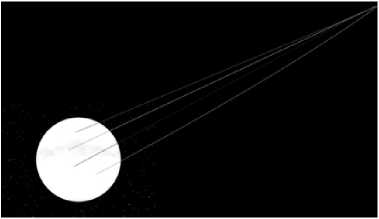
Fig. 1. Entry vehicles aimed at different Venus latitude zones in turn consist of several vehicles intended for different heights assembled using a tandem principle. After entering into the atmosphere, these vehicles disintegrated, releasing balloons
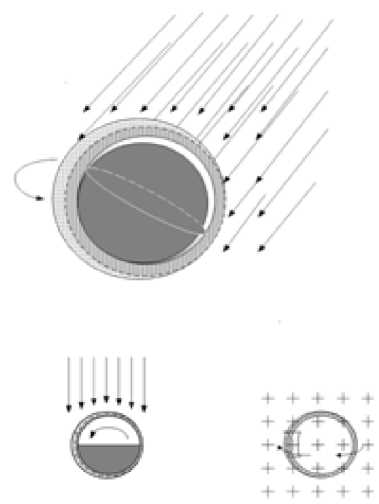
Fig. 2. In the illustration, the change of altitude of a cloud layer for morning and evening terminators is shown schematically
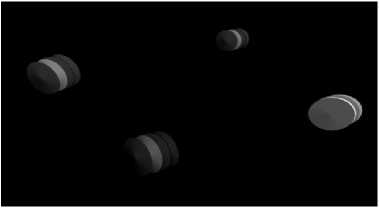
Fig. 3. Each vehicle aimed at different Venus latitude zones in turn consists of several vehicles intended for different heights
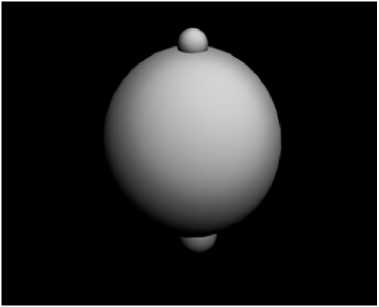
Fig. 4. Envelopes are made of metalized PET foil. The payload mass on each probe is 1 kg. The diameter of the envelope depends on the altitude, and at an altitude range of 50-70 km, is in the range of 1-3 meters. At the upper pole is a transmitter antenna, and at the lower pole is the payload
Список литературы Теоретическое и экспериментальное исследование суперротации атмосферы планеты Венера
- Ytterdal T., Moon B.J., Fjeldly T.A., Shur. M.S. GaAs MESFET Model for the Temperature Range from 4 K to 625 K. Inst. Phys. Conf. Series., 1996, no. 145, pp. 711-716
- web portal TWI. Available at: http://twi-global.com/technical-knowledge/faqs/environment-faqs/faq-what-are-high-temperature-electro nics/
- McCluskey F.P., Podlesak T., Grzybowski R. High Temperature Electronics. CRC Press, 1997, 322 p
- Braginsky V.B., Manukin A.B. Rotational ponderomotive instability. JETP Letters, 1970, vol. 11, no. 7, pp. 213-215
- Linkin V.M., Manukin A.B. On the mechanism of abnormal rotation of the atmosphere of Venus. Space research, 2009, no. 1, b. 47, pp. 95-96
- Zasova L.V., Moroz L.V., Linkin V.M. and etc. The structure of the atmosphere of Venus from the surface to 100 km. Space research, 2006, no. 4, b. 44, pp. 1-20
- Zasova L.V., Ignatiev N., Khatuntsev I., Linkin V.M. Structure of the Venus atmosphere. Planetary and space science, 2007, vol. 55, I. 12, pp. 1712-1728

